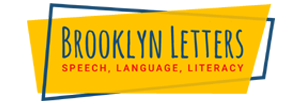Understanding the Importance of Test for Reading Level

The reading level is an important factor to consider when writing any text. Whether you’re writing an essay for school, a blog post, or a business document, it’s important to make sure your language is appropriate for the intended audience. Fortunately, there are a number of tests available to help you measure the reading level of your text and ensure that it’s understandable by the intended readers. In this blog post, we’ll discuss the different types of tests you can use to measure the reading level of your text and how to use them.
Purpose of a Test for Reading Level
Testing for reading level is important for assessing an individual’s ability to read and understand written text. The test can be used to evaluate comprehension, vocabulary, and fluency of written text. It can be used to determine a student’s grade level, measure progress, and identify areas of improvement. It can also be used to determine whether an individual is ready for college-level coursework or can benefit from remediation.
Tests for reading level can have a variety of uses. It can be used to screen for special education services or placement into gifted programs. It can also be used in the workplace to assess an individual’s reading ability and understand job-specific material. Employers may also use the test as part of the hiring process to ensure a potential employee can read and comprehend instructions and policies.
Tests Available to Measure Reading Level
Standardized tests are consistent, standardized measurements of a student’s reading level, typically based on grade-level expectations. Examples of standardized tests include the Woodcock-Johnson Tests of Achievement and the Scholastic Reading Inventory. These tests provide an overall assessment of a student’s reading level and are used to measure progress over time.
- Informal assessments are used to supplement the standardized tests. These tests measure a student’s understanding of concepts such as phonics, comprehension, fluency, and vocabulary. Examples of informal assessments include the DIBELS Oral Reading Fluency Test and the Gray Oral Reading Test. These tests are designed to provide more detailed information about a student’s reading level.
- Diagnostic assessments are used to identify specific areas of difficulty in a student’s reading skills. Examples of diagnostic assessments include the Test of Word Reading Efficiency and the Test of Reading Comprehension. These tests are intended to help teachers and parents target areas where a student needs extra help.
- Progress monitoring tests are typically administered to measure a student’s progress in reading over a period of time. Examples of progress monitoring tests include the Dynamic Indicators of Basic Early Literacy Skills and the Maze Passage Test. These tests allow teachers to track students’ progress and adjust their teaching strategies accordingly.
By using a combination of standardized tests, informal assessments, diagnostic assessments, and progress monitoring, teachers and parents can thoroughly understand a student’s reading level and provide the support they need to reach their full potential.
Common Assessment Methods for Reading Levels
When it comes to assessing reading levels, educators rely on various methods to gain insights into students’ abilities and guide their instruction. These assessment methods provide valuable information about students’ reading skills, comprehension, fluency, and overall literacy development. From informal observations and checklists to standardized tests, these assessment techniques help educators tailor instruction and provide targeted support to promote students’ reading growth.
Here are some common assessment methods used to determine reading levels and inform instructional decisions:
- Informal Reading Inventories (IRIs): IRIs are informal assessments conducted by teachers to gauge students’ reading abilities. These assessments typically involve listening to students read aloud and analyzing their accuracy, fluency, and comprehension.
- Running Records: Running records involve observing and documenting students’ reading behaviors as they read a selected text. Educators note errors, self-corrections, and fluency to determine students’ reading levels and comprehension.
- Miscue Analysis: This assessment technique focuses on analyzing errors made by students during reading. By examining the types of mistakes, educators gain insights into students’ decoding and comprehension skills.
- Standardized Reading Tests: Standardized tests, such as the Developmental Reading Assessment (DRA), Scholastic Reading Inventory (SRI), or the Dynamic Indicators of Basic Early Literacy Skills (DIBELS), provide objective measurements of students’ reading abilities and help benchmark progress against grade-level expectations.
- Teacher Observations and Checklists: Educators can employ their expertise by using observations and checklists to evaluate students’ reading behaviors, strategies, and engagement. This qualitative data provides a comprehensive view of students reading skills.

Conclusion
Testing for reading levels plays a crucial role in supporting students’ literacy development and providing effective instruction. By utilizing various assessment methods, educators gain valuable insights into students’ reading abilities, enabling them to tailor instruction, monitor progress, and provide targeted interventions when needed. Whether through informal reading inventories, running records, standardized tests, or teacher observations, these assessment techniques provide a comprehensive view of students’ reading skills and guide educators in selecting appropriate reading materials and instructional strategies.
The power of reading level assessments lies in their ability to unlock the potential of every student, ensuring that they receive the support and resources necessary to thrive as confident and proficient readers. By embracing assessment as a tool for growth, educators empower students on their journey toward literacy success, opening doors to a world of knowledge, imagination, and lifelong learning.
Our reading tutors can provide personalized instruction and support tailored to individual students’ needs. They can also help develop the student’s overall literacy skills, from phonemic awareness and fluency to comprehension and critical thinking. With the right instruction and practice, our reading tutors can help the student progress to the next level and beyond. By focusing on the student’s strengths and weaknesses, our tutors can help improve reading levels while providing a more engaging and enjoyable reading experience.
Additionally, our tutors can offer tips and strategies for helping the student to understand difficult concepts and texts better and to develop their own skills for comprehending and analyzing passages. With the help of our reading tutors, students can improve their reading levels and develop their literacy skills for long-term success.
Chat with Us Today!
Our Literacy Specialists work on decoding, encoding (spelling), reading comprehension, and writing skills.
FREE CONSULTATION!!!
Call: (347) 394-3485, Text: (917) 426-8880
Email: [email protected]
(we respond to email right away!)
Craig Selinger
Latest posts by Craig Selinger (see all)
- NYC Middle School Transition Support Group - April 7, 2024
- Understanding Toddler Neurodevelopmental Evaluation - April 3, 2024
- Rare Diseases in New York City - February 29, 2024













